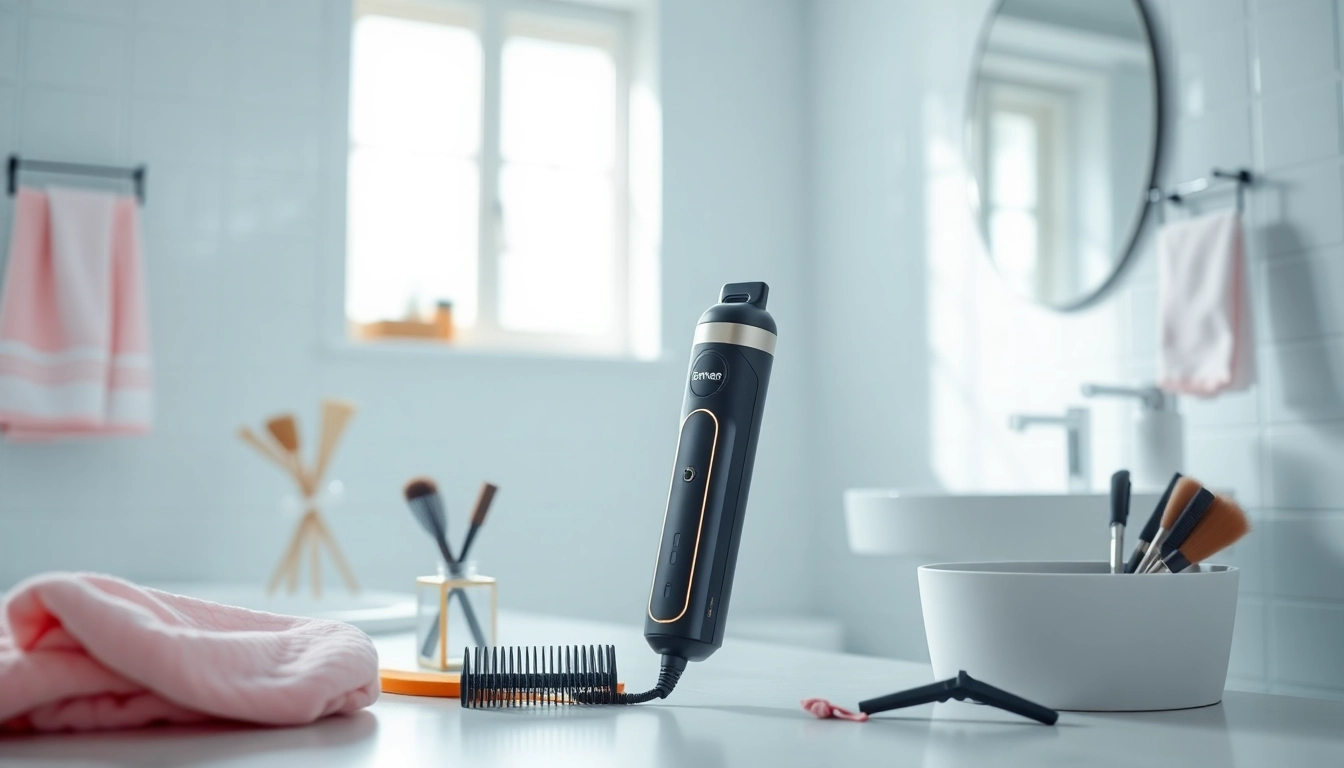Understanding Robot Vacuums and Mops
What is a Robot Vacuum and Mop Combo?
A robot vacuum and mop combo is a sophisticated cleaning device that combines both vacuuming and mopping functionalities into one seamless automated solution. Designed to navigate the intricacies of modern homes, these devices use advanced sensors and mapping technology to clean various floor types, including hardwood, tile, and carpet.
This tool embodies the evolution of household technology, representing a systematic approach to cleaning that minimizes effort while maximizing results. For homeowners looking to streamline their cleaning routine, robot vacuum and mop systems offer a practical solution to busy lifestyles. As opposed to the traditional vacuum and mop methods, these devices operate autonomously, allowing users to reclaim time for more enjoyable activities.
How Do Robotic Cleaners Work?
At the core of robotic vacuums and mops is an intricate interplay of technology and design that allows them to function effectively in the home environment. Most robotic cleaners operate using a combination of sensors that detect obstacles, cliff edges, and surface types. This enables the device to adjust its cleaning method accordingly—vacuuming over carpets and transitioning to mopping on hard floors. Here’s a breakdown of how they work:
- Navigation and Mapping: Many models are equipped with LiDAR or camera systems to create a mapping of the home’s layout. This allows the robot to navigate intelligently, ensuring comprehensive coverage without retracing its steps unnecessarily.
- Cleaning System: These devices utilize rotating brushes, HEPA filters, and sometimes even UV light to dislodge and eliminate dirt, allergens, and contaminants from the floor. The combination of vacuuming and wet cleaning technologies contributes to a more profound clean than manual methods.
- Operation Modes: Depending on the settings, users can select scheduled cleanings, specific area targeting, or custom settings to optimize the cleaning process for their unique needs.
Key Features to Look For
When shopping for a robot vacuum and mop, there are several features and functionalities to consider that can enhance the cleaning experience:
- Smart Mapping: The ability to map the home and learn from its environment over time improves efficiency.
- Adaptive Cleaning Modes: Look for devices with multiple modes, such as spot cleaning, edge cleaning, or scheduled cleaning, allowing for customization based on cleaning needs.
- App Integration: Many modern units come with smartphone connectivity, enabling users to control the robot remotely, check cleaning history, and receive notifications.
- Self-Emptying Capability: Some advanced models can empty their own dustbins into a base unit, minimizing the frequency of user intervention.
- Battery Life and Coverage: Assess the battery runtime and area coverage to ensure the robot can accomplish its tasks on a single charge.
Advantages of Using Robot Vacuums and Mops
Convenience and Automation in Everyday Cleaning
The primary allure of a robotic vacuum and mop lies in the convenience it offers. Traditionally, cleaning floors is a time-consuming task that requires physical effort and planning. With robotic cleaners, homeowners can automate this process:
- Hands-Free Operation: Simply set your robot to clean, and it will take care of the rest—no supervision required.
- Integration with Smart Home Systems: Many devices support voice commands through assistants like Alexa or Google Assistant, allowing for total hands-free operation.
Time-Saving Benefits for Busy Households
In today’s fast-paced world, finding time to clean can be challenging. By employing a robot vacuum and mop, households experience significant time savings:
- Scheduled Cleanings: Users can set their robots to clean during specific times, such as while they’re at work or overnight, effectively managing their time.
- Less Frequent Manual Cleaning: Regular automated cleaning means less need for intensive manual efforts, contributing to overall household cleanliness.
Enhanced Cleaning Efficiency Compared to Traditional Methods
Robot vacuums and mops not only automate cleaning, but they also enhance cleaning efficiency:
- Consistent Performance: Robots can clean daily or multiple times a week, keeping dirt and allergens at bay, especially valuable in allergenic households.
- Thoroughness: Many robotic cleaners are designed to navigate various surfaces and clean effectively in hard-to-reach areas, often outperforming traditional methods.
Common Challenges and Solutions
Addressing Pet Hair and Allergens
Animal owners often encounter one of the primary challenges: managing pet hair and dander. Fortunately, many robots are equipped to handle these issues:
- Powerful Suction: Look for models that highlight strong suction power particularly suitable for picking up pet hair.
- HEPA Filters: These filters capture allergens and fine particles, relieving allergy sufferers in the home.
Managing Different Floor Types
Different floor types can present difficulties for robotic cleaners. However, the latest technology has made significant strides:
- Adaptive Sensors: Advanced robots can detect floor types and automatically adjust their cleaning modes. For instance, they may switch from a deep clean on carpets to a gentle mop on tile floors.
- Multi-Surface Brushes: Brushes that can transition between surfaces ensure that floors are separated by different cleaning needs.
Battery Power and Maintenance Tips
Battery life and maintenance are essential considerations for robotic vacuum and mop units:
- Regular Charging: Ensure the robot can return to its charging dock after completing its cycle, and consider units with larger batteries or those that self-empty to maximize runs.
- Routine Maintenance: Follow manufacturer guidelines for changing filters, cleaning brushes, and emptying the dustbin to ensure optimal performance.
Top Robot Vacuums and Mops on the Market
Comparison of Leading Brands
As with any market, there’s a diversity of brands offering robot vacuums and mops, each with unique features. Market leaders include:
- iRobot Roomba: Known for their robust performance and variety of models, Roomba offers dedicated mops and vacuum combos.
- Shark: Shark models frequently emphasize self-cleaning brushes and advanced navigation systems.
- Roborock: Roborock provides strong suction and mop capabilities along with advanced mapping features.
User Reviews and Testimonials
User reviews highlight key considerations for potential buyers. Many users appreciate:
- Versatility: Users often note the effectiveness of dual-functionality in reducing cleaning time significantly.
- Time Efficiency: Customers frequently mention the robot’s ability to work while they focus on other tasks, adding convenience to their daily lives.
Price Ranges and Budget-Friendly Options
The price of robot vacuum and mop combos can vary widely, generally falling into these categories:
- Entry-Level Models: Ranging from $200 to $400, these robots may offer basic features and cleaning capabilities.
- Mid-Range Options: Priced between $400 and $800, these typically include more advanced functionalities like smart mapping and better battery life.
- Premium Models: Often exceeding $800, these consist of high-end features such as 3D mapping, self-emptying capabilities, and extensive app integration.
Getting the Most Out of Your Robot Vacuum and Mop
Setting Up and Customizing Cleaning Schedules
Once you acquire a robot vacuum and mop, proper setup is essential to maximize its potential:
- Mapping Your Space: Allow the device to perform a full mapping cycle to better understand the layout of your space.
- Custom Schedules: Utilize the mobile app to create personalized cleaning schedules that align with your lifestyle.
Essential Maintenance for Longevity
Regular maintenance can significantly extend the life of your robotic vacuum and mop:
- Clean Brushes and Filters: Monthly cleaning of brushes and filters can help maintain suction power and efficiency.
- Keep Sensors Clear: Ensure that dust and debris do not obstruct sensors for optimal navigation and detection.
Future Trends in Robotic Cleaning Technology
The realm of robotic cleaning technology continues evolving, promising exciting advancements such as:
- Improved AI: Future models may incorporate more sophisticated AI to learn user preferences and optimize cleaning patterns.
- Advanced Integration: As home automation becomes more prevalent, expect tighter integration with smart home devices, fostering seamless interaction across all appliances.



